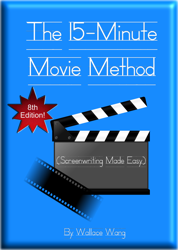Many people are interested in writing a screenplay for a movie but many more seem interested in creating their own TV show. Neither goal is easy and most studios prefer to work with experienced writers before giving them a chance to make their own TV show. Still, if you’re interested, making your own TV show means creating something intriguing that can last for multiple seasons.
Essentially that means you need to create an idea that defines every episode and never concludes. Feature films always reach a definite conclusion. Think of the Death Star blowing up in “Star Wars” or Rose surviving the sinking of an ocean liner in “Titanic.”
On the other hand, TV shows never reach a definite conclusion. In “Breaking Bad,” the hero, Walter White, is always struggling to sell meth while avoiding getting caught. Early in the show, he’s relatively poor and powerless. Later in the show, he’s much richer with more power, yet the essence of the show remains the same: Walter White is trying to make money selling drugs without getting caught.
With TV shows, there’s always a core problem that drives the entire show, but which never gets resolved. No matter how much money or power Walter White gets, he’ll always be struggling to sell drugs to make money without getting caught. The details may change but the situation remains the same in every episode.
What most novices do when they come up with TV show ideas is focus on a unique setting and characters – and then they stop right there. Essentially, they’re saying, “Look at all the weird and interesting people I made up in an unusual setting. Now I’m a show creator!”
Nope.
Making up a TV show involves more than making up unique characters and setting because if you ask these “show creators” what their show is about, they might talk about the strange characters, what they do, how they look, and what the setting might be. They might even tell you about specific stories and what happens. However, most “show creators” will never be able to tell you what’s the common driving force that defines their entire TV show idea.
That’s because even they don’t know what it might be. If you don’t know what’s the driving force that can keep your TV show going for as long as possible (often called the show or story engine), you don’t have a TV show idea at all. You just have a bunch of distinct characters in a setting, much like putting colorfully dressed mannequins on a stage filled with props and telling everyone, “Isn’t this a great show idea? Look at the unique characters! Look at the interesting setting!”
The story engine is never a specific place or specific characters. It’s not even the relationship between characters. Instead, it’s the core essence of your idea that’s completely separate from whatever setting or characters you create.
To understand what the core essence or story engine of a TV show might be, watch this promo video for the original “Twilight Zone” series. Unlike most TV shows, each episode of the Twilight Zone introduced completely different characters in completely different settings. Yet, most every episode delivered on the show’s core driving force or story engine:
The Twilight Zone uses supernatural, science fiction, or fantasy elements to tell a morality tale about human nature.
Watch classic episodes from the original “Twilight Zone” series and you’ll see that they match the above story engine. “The Monsters Are Due on Maple Street” tells a story of neighbors turning against each other and killing each other out of fear that one of them is different, which warns against demonizing others just because they might look or act different from us.
“The Obsolete Man” tells a story about a librarian sentenced to death in an authoritarian society, but the librarian tricks the authoritarian leader into proving who is really stronger, the nameless state or an individual?
“Where is Everybody?” tells a story about a man who finds himself alone in a town and starts going crazy, until we realize he’s an experimental test subject that shows us the importance of human contact.
“The Masks” tells a story about greedy relatives who hope to inherit money from a rich man, until the man forces them to wear masks to expose their true nature to the world.
“The Rip Van Winkle Caper” tells a story about four criminals who steal gold and put themselves in suspended animation for 100 years to avoid the authorities. Then they find out how much gold is really worth in the future and how they risked their lives for nothing.
Despite completely different characters, settings, and stories, most of the Twilight Zone episodes deliver on the show’s driving force, which is to tell morality tales using the unusual.
When you can define the essence of your story idea, regardless of specific characters or setting, that’s when you know you have a story idea. Most people start with trying to create interesting characters and settings (usually derived from the latest popular shows currently on the air), and then they have no idea what’s the core driving force that would make their characters and setting interesting time and time again.
Start with the abstract idea first, and then populate it with the characters and setting that will support your idea. As you can see from the Twilight Zone, the actual characters and setting are completely irrelevant. The driving force of your show is really what’s important.
If you don’t believe me, just look at how The Twilight Zone is still beloved after all these years while so many other TV shows, that focused on bizarre characters or distinct settings, have come and gone over the decades since The Twilight Zone originally aired in 1959.
Sign up to take a FREE course about how to write scenes in a screenplay.

